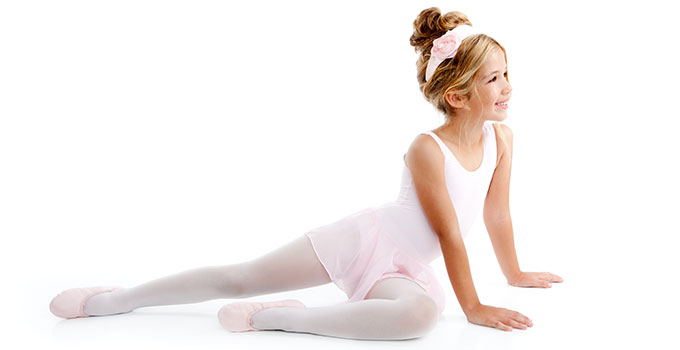A mother’s love and determination connects therapeutic research with New York City ballerina and world-class musician to help children with cerebral palsy.
New mothers dream of having perfectly healthy children, although when a child is born with special needs, those dreams are quickly shattered and a difficult new reality sets in. In 2006, Debbie Fragner’s daughter Maddie was born three months early and the complications of her premature birth resulted in a diagnosis of Cerebral Palsy (CP). While Fragner and her husband were initially immobilized by the shock and uncertainty of the diagnosis, Debbie’s fear was eventually transformed into determination and a commitment to do everything possible to maximize her daughter’s potential.
A Girl’s Dream to be a Ballerina
Maddie wanted to learn to dance like a ballerina but given that she wears braces on both legs, has difficulties with balance and requires the use of a reverse walker for mobility, Fragner wasn’t hopeful initially. She had already experienced barriers to entry for a child of disability to access ‘the arts.’ Still, she couldn’t shake the idea and began the quest of researching rehabilitative art forms for children with CP.
In the process of her research, Fragner found that although interest in rehabilitative research was high, national funding was not. In fact, there is no dedicated U.S. line item federal funding for Cerebral Palsy research at the CDC or NIH, even though Cerebral Palsy has higher prevalence than muscular dystrophy, Parkinson’s disease, childhood cancer, hearing loss, spina bifida, hemophilia, fetal alcohol syndrome or cystic fibrosis.
In fact, Cerebral Palsy affects:
• 1 in 323 children in the U.S.
• 10,000 babies per year
• 800,000 American children and adults
• 17,000,000 people worldwide
Children’s Cerebral Palsy Movement is Formed
The enormous gap in CP funding and her daughter’s dream of dancing ballet set Fragner on a whirlwind journey to found the Southern California nonprofit, Children’s Cerebral Palsy Movement in 2015. From there she recruited a local team of physical therapists and professional dance instructors to design a therapeutic protocol morphing elements of physical therapy, classical ballet technique and live music. The ultimate goal is to improve gait, balance and overall quality of life for children with Cerebral Palsy. While being therapeutically valuable, the protocol’s purpose would be to have fun and to capitalize on the children’s inherent desire to dance ballet and build meaningful peer friendships.
New York City Ballerina and David Bowie Musician Join the Cause
As Children’s Cerebral Palsy Movement initiative was getting underway at UCI, Fragner knew she needed an advocate in ballet and by chance, discovered that New York City ballerina Carrie Lee Riggins was performing in southern California. The two met and miraculously, the respected ballerina was on board. Since live music was found in the research to embody healing qualities and to assist in eliciting neuroplasticity of the brain, the final piece of the puzzle was to find a musician to oversee the music for the team’s initial pilot study. Fragner once again set her sights high and through an introduction by Dr. Afshin Aminian of CHOC Children’s Orthopedic Institute, Fragner was introduced to the Music-Heals Project’s co-founder and former David Bowie musician, Mike Garson.
Both Riggins and Garson performed at Children’s Cerebral Palsy Movement’s recent launch party in Newport Beach.
Support Children’s Cerebral Palsy Movement’s Future
The first eight-week therapeutic ballet classes for up to 11 children with Cerebral Palsy will begin in summer of 2016. Held at the dance studios at UCI, the sessions will span three hours per week as the children build friendships, indulge their passion to dance and receive valuable therapeutic instruction from a therapy team, dance instructors, student volunteers, live musicians
and on occasion, appearances by Garson and Riggins.
Plans are already in place at a local dance studio for transitional ballet classes after the initial study concludes. And the organization plans to build on the success of their first pilot study to include a larger study next year while researching and developing other protocols involving children’s interests in performing arts and sports.
Children’s Cerebral Palsy Movement is seeking community participation and corporate involvement to bring this unique therapy form to more children around the country. For more information or to make a tax-deductible donation, call (714) 746-4085 or visit childrenscerebralpalsymovement.org.


